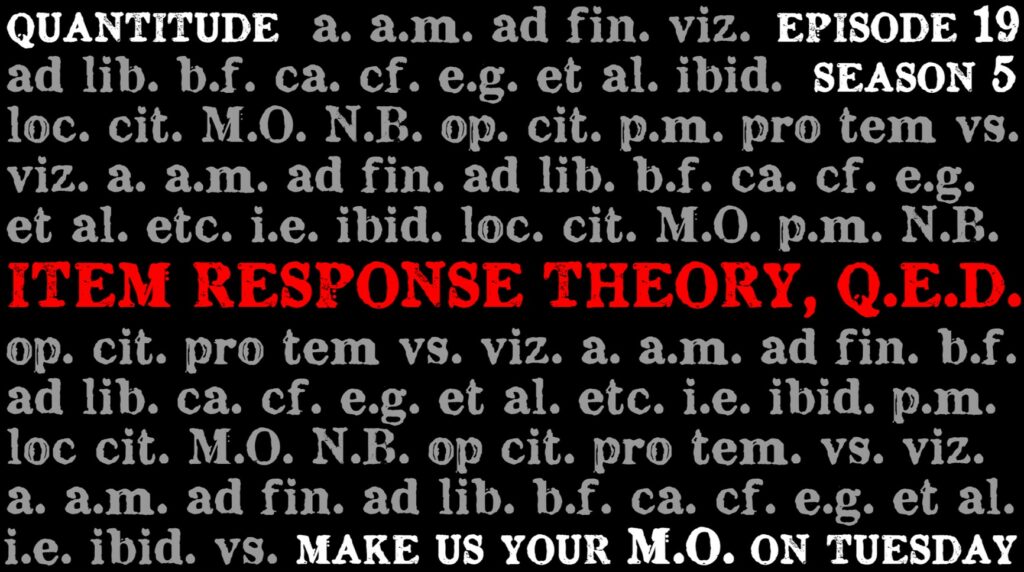In this week’s episode Patrick and Greg provide an introduction to the Item Response Theory model: what it is, how it relates to traditional factor analysis, and how this modem approach improves upon some of the limitations of classical test theory. Along the way they also mention weinerness, memorizing Latin for punishment, eggszampke, in ether words, ITR, switching a and b, I’m not defensive – you are, why biostatisticians hate us (page 3 subsection 8), binary babble, EAPs and MAPs, computer adaptive testing on the playground, Bob’s your uncle, and the liberal arts mic drop.
Related Episodes
- S5E15: Classical Test Theory (in bed)
- S4E05: Moderated Nonlinear Factor Analysis with Dan Bauer
- S2E27: (re)Connecting With Discrete Data
- S1E22: Factor Analysis: The Good, The Bad, & The Ugly
Recommended Readings
Baker, F. B., & Kim, S. H. (2017). The basics of item response theory using R (Vol. 969). New York: Springer.
Cai, L., Choi, K., Hansen, M., & Harrell, L. (2016). Item response theory. Annual Review of Statistics and Its Application, 3, 297-321.
Embretson, S. E., & Reise, S. P. (2013). Item response theory. Psychology Press.
Reise, S. P., & Waller, N. G. (2009). Item response theory and clinical measurement. Annual Review of Clinical Psychology, 5, 27-48.
Steinberg, L., & Thissen, D. (1996). Uses of item response theory and the testlet concept in the measurement of psychopathology. Psychological Methods, 1, 81.
Thissen, D., Steinberg, L., & Wainer, H. (2012). Detection of differential item functioning using the parameters of item response models. In Differential item functioning (pp. 67-113). Routledge.
Thissen, D., & Wainer, H.. (2001). Test scoring. Lawrence Erlbaum Associates Publishers.
Wirth, R. J., & Edwards, M. C. (2007). Item factor analysis: Current approaches and future directions. Psychological Methods, 12, 58.
Van der Linden, W. J., & Hambleton, R. K. (1997). Handbook of item response theory. Taylor & Francis Group. Citado na pág, 1, 8.

